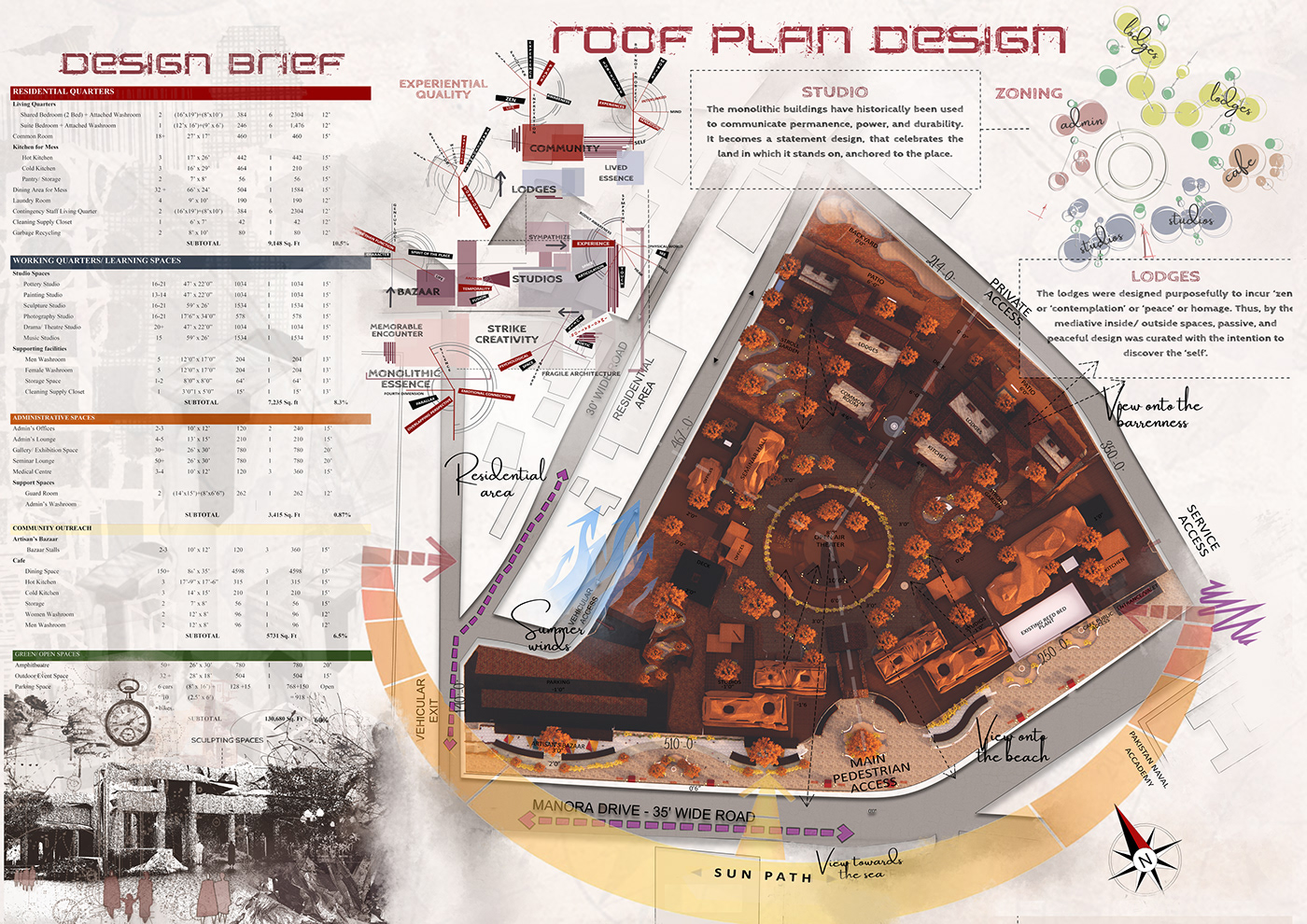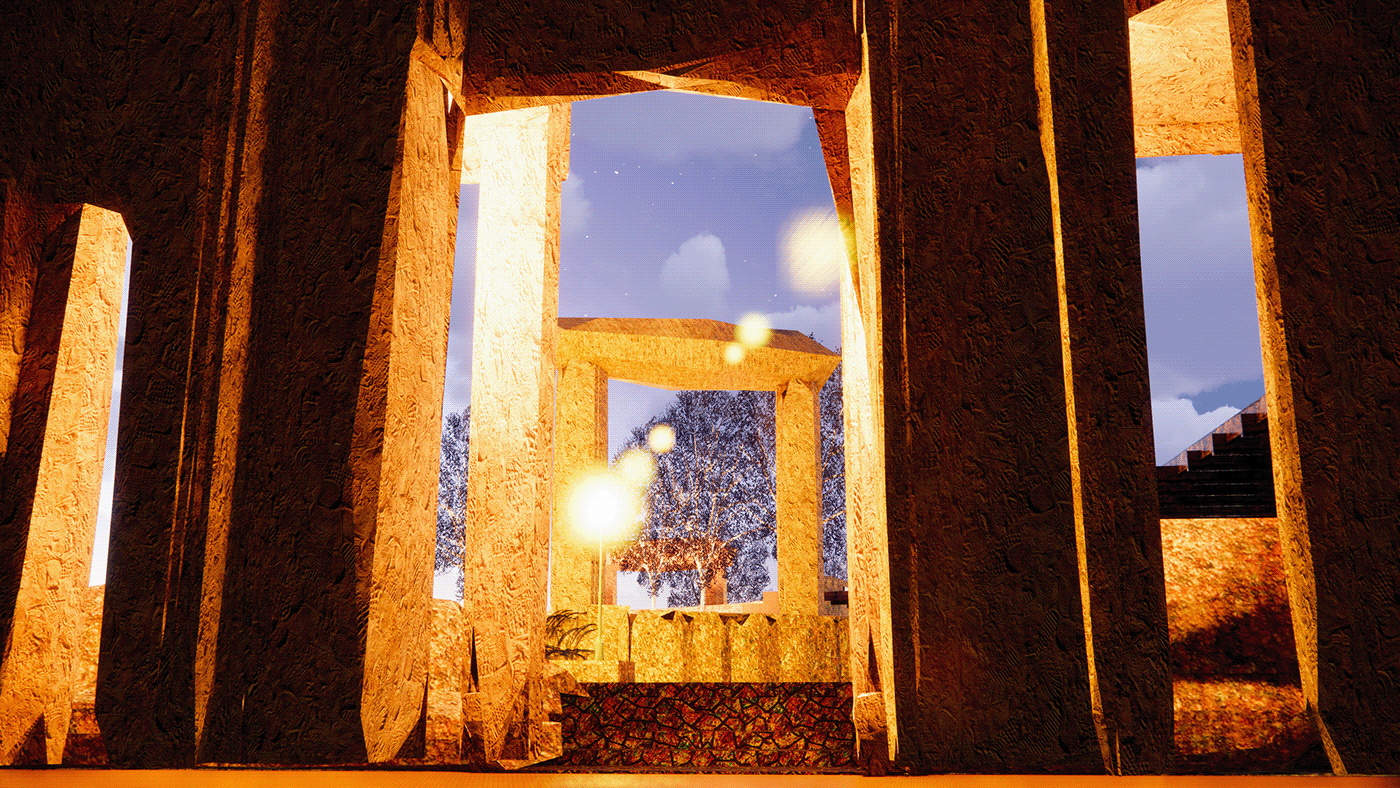PHENOMENOLOGICAL APPROACH TO ARCHITECTURE: A JOURNEY OF SELF DISCOVERY (PART 3)
Artist's Residency in Manora has the potential to celebrate a context that is struggling with urban decay despite its much potential. The newer developments aim to take over its humanistic essence and transform the place entirely. The ambition of a hyper modernised utopia threatens the sanctity and character of the place, which struggles with decay and would be threatened by marginalization.
Manora serves as the right spot for an Artists residency, to initiate important conversation of the land’s uncanny struggle, disorienting stretches of emptiness and yet, Manora’s sublime character at its heart. From the perspective of visual artists or artisans, Manora could be identified, celebrated, and the integrity of which could be protected and promoted. As its stories date back to 1600s and thus, the aim is nonmonumental memorialization, not an elitist art, but through metaphor, to voice concerns for the region.

The “Essence” lies in the land it is built on, in the history that forms the aura, the architecture that reminds of the latently alive past and in the grand hearts of the people of Manora.
The concept is meant to mould an abstract aura, generated through the analysis that had highlighted the rich fabric of Manora, into an architectural design that could capture this vibrant spirit.

Manora’s spirit reflects in its streets and spaces, in the echoes of the steps, in the depths of the shadows, in the sound of the echoes and the silence of the sea. It lies in the lives of the people and in the lure of its history, in the calm of the air and the beauty of that sea!
Oh, you will love the ocean, the colour of the sky, and the rush of the waves! It makes you feel small, but not in a bad way. Small, because you realize… You are part of something much bigger...


Phenomenology discusses experiences particularly as it is ‘lived’ and as it is structured consciously. Experience, to elaborate, refers to something you undergo. something that happens to us. Therefore, phenomenology stratifies the unique experience above all, and thus, the sensory details need to be incorporated in order to create intimate spaces, with intricate details, to craft memorable encounters, for an experience that becomes engrained in memory.
The space is not simply experienced by the eye; it is neither isolated nor purely just visual, but the polyphony of all the senses brings a deeper understanding of the world and architecture with a better material, embodied, and spiritual essence.













Phenomenology stood out for its emphasis on meaning, sensation, experiences, intentions, reflections, and poetic design of spaces, as Modernity continued to place immense emphasis on rationalistic approach to design to the point of desensitizing people and spaces to impart a mechanical sense of reason in their approach.
The concept emphasis seeing architecture through a multidimensional lens, beyond an object of conventional parameters, formal properties, programmatic concerns or technical functionality.
It is the rigid sterility in spaces, that led to insipid, dead, cold designs, meant to accomplish the functional target. But we are not just minds, as Daniel Libeskind, founder of Studio Libeskind, puts it, “we are carnal, we are incarnated; it is a visceral experience, so architecture will always play an incredibly important role in this primordial sense of light, of weight, of transcendence, of hope, of dreams.”
Architecture should converse with us or perhaps even confront us, on an emotional and psychic level for a richer intellectual, therapeutic, and transcendental experience. A profound space would provide more than accommodation but also impression the mind and craft a memorable experience. The experiential potential of architecture could impart a richer meaning to it, the essence of which is unburdened by convention or intellectualized explanation. It needs to be explored and lived through.
In its elemental form, perhaps it could entrance in a point of euphoria, through sensorial rupture, mystery and shadow, or even shrewd visual seduction.
Utility turns into stunning sense of euphoria, as the spaces break the conformity of the function, and implicit a play of senses, that enthuse, and instils the true meaning of life.
Through the sound of the rain and breeze of the wind, it could embody the true quality of a space. Not as an instant visual art, lost in the modern nowhere, nor as an alienated and isolated body, but one that that exceeds geometry and measurability through the polyphony of the senses, insisting on a dimension of transcendence in the space.
Hi, My name is Hira Fatima, I am a PCATP Licnesed Architect, graduate of NEDUET in 2022. Please like and share my thesis. Thank you for your love!




